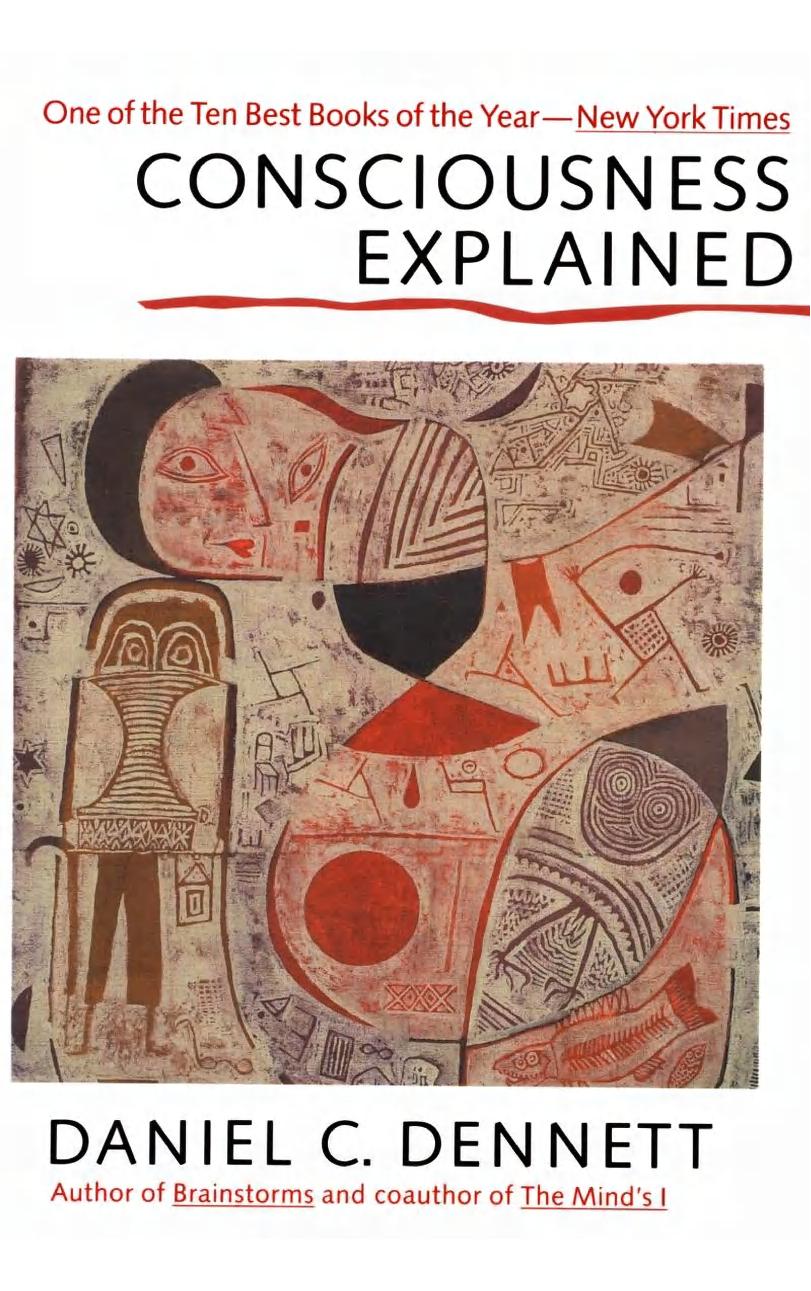Consciousness Explained by Daniel C. Dennett

Author:Daniel C. Dennett
Language: eng
Format: mobi, epub, azw3, pdf
Tags: Non-Fiction, Philosophy, Psychology, Science
ISBN: 0316180661
Publisher: ePenguin
Published: 1991-01-01T00:00:00+00:00
4. THE POWERS OF THE JOYCEAN MACHINE
According to our sketch, there is competition among many concurrent contentful events in the brain, and a select subset of such events “win.” That is, they manage to spawn continuing effects of various sorts. Some, uniting with language-demons, contribute to subsequent sayings, both sayings-aloud to others and silent (and out-loud) sayings to oneself. Some lend their content to other forms of subsequent self-stimulation, such as diagramming-to-oneself. The rest die out almost immediately, leaving only faint traces — circumstantial evidence — that they ever occurred at all. What good does it do, you might well want to ask, for some contents to win entrance in this way to the charmed circle — and what is so charmed about this circle? Consciousness is supposedly something mighty special. What is so special about being advanced to the next round in such a cycle of self-stimulation? How does this help? Do near-magical powers accrue to events that occur in such mechanisms?
I have avoided claiming that any particular sort of victory in this competitive whirl amounts to elevation to consciousness. Indeed, I have insisted that there is no motivated way to draw a line dividing the events that are definitely “in” consciousness from the events that stay forever “outside” or “beneath” consciousness. (See Allport, 1988, for further arguments in favor of this position.) Nevertheless, if my theory of the Joycean machine is going to shed light on consciousness at all, there had better be something remarkable about some if not all of the activities of this machine, for there is no denying that consciousness is, intuitively, something special.
It is hard to address these familiar questions without falling into the trap of thinking that first we must figure out what consciousness is for, so we can then ask whether the proposed mechanisms would succeed in performing that function — whatever we determine it is.
In his influential book Vision (1982), the neuroscientist/AI researcher David Marr proposed three levels of analysis that should be pursued in the attempt to explain any mental phenomenon. The “top” or most abstract level, the computational, is an analysis of “the problem [my italics] as an information-processing task,” while the middle, algorithmic, level is an analysis of the actual processes by which this information-processing task is performed. The lowest, physical level provides an analysis of the neural machinery and shows how it executes the algorithms described at the middle level, thereby performing its task as abstractly described at the computational level.6
Marr’s three levels can also be used to describe things that are much simpler than minds, and we can get a feel for the differences between the levels by seeing how they apply to something simple, such as an abacus. Its computational task is to do arithmetic: to yield a correct output for any arithmetic problem given to it as input. At this level, then, an abacus and a hand calculator are alike; they are designed to perform the same “information-processing task.” The algorithmic description of the
Download
Consciousness Explained by Daniel C. Dennett.epub
Consciousness Explained by Daniel C. Dennett.azw3
Consciousness Explained by Daniel C. Dennett.pdf
This site does not store any files on its server. We only index and link to content provided by other sites. Please contact the content providers to delete copyright contents if any and email us, we'll remove relevant links or contents immediately.
The remains of the day by Kazuo Ishiguro(8825)
Tools of Titans by Timothy Ferriss(8218)
Giovanni's Room by James Baldwin(7192)
The Black Swan by Nassim Nicholas Taleb(7010)
Inner Engineering: A Yogi's Guide to Joy by Sadhguru(6725)
The Way of Zen by Alan W. Watts(6506)
Asking the Right Questions: A Guide to Critical Thinking by M. Neil Browne & Stuart M. Keeley(5641)
The Power of Now: A Guide to Spiritual Enlightenment by Eckhart Tolle(5607)
The Six Wives Of Henry VIII (WOMEN IN HISTORY) by Fraser Antonia(5397)
Astrophysics for People in a Hurry by Neil DeGrasse Tyson(5134)
Housekeeping by Marilynne Robinson(4347)
12 Rules for Life by Jordan B. Peterson(4250)
Double Down (Diary of a Wimpy Kid Book 11) by Jeff Kinney(4207)
The Ethical Slut by Janet W. Hardy(4174)
Skin in the Game by Nassim Nicholas Taleb(4162)
Ikigai by Héctor García & Francesc Miralles(4125)
The Art of Happiness by The Dalai Lama(4063)
Skin in the Game: Hidden Asymmetries in Daily Life by Nassim Nicholas Taleb(3929)
Walking by Henry David Thoreau(3894)
